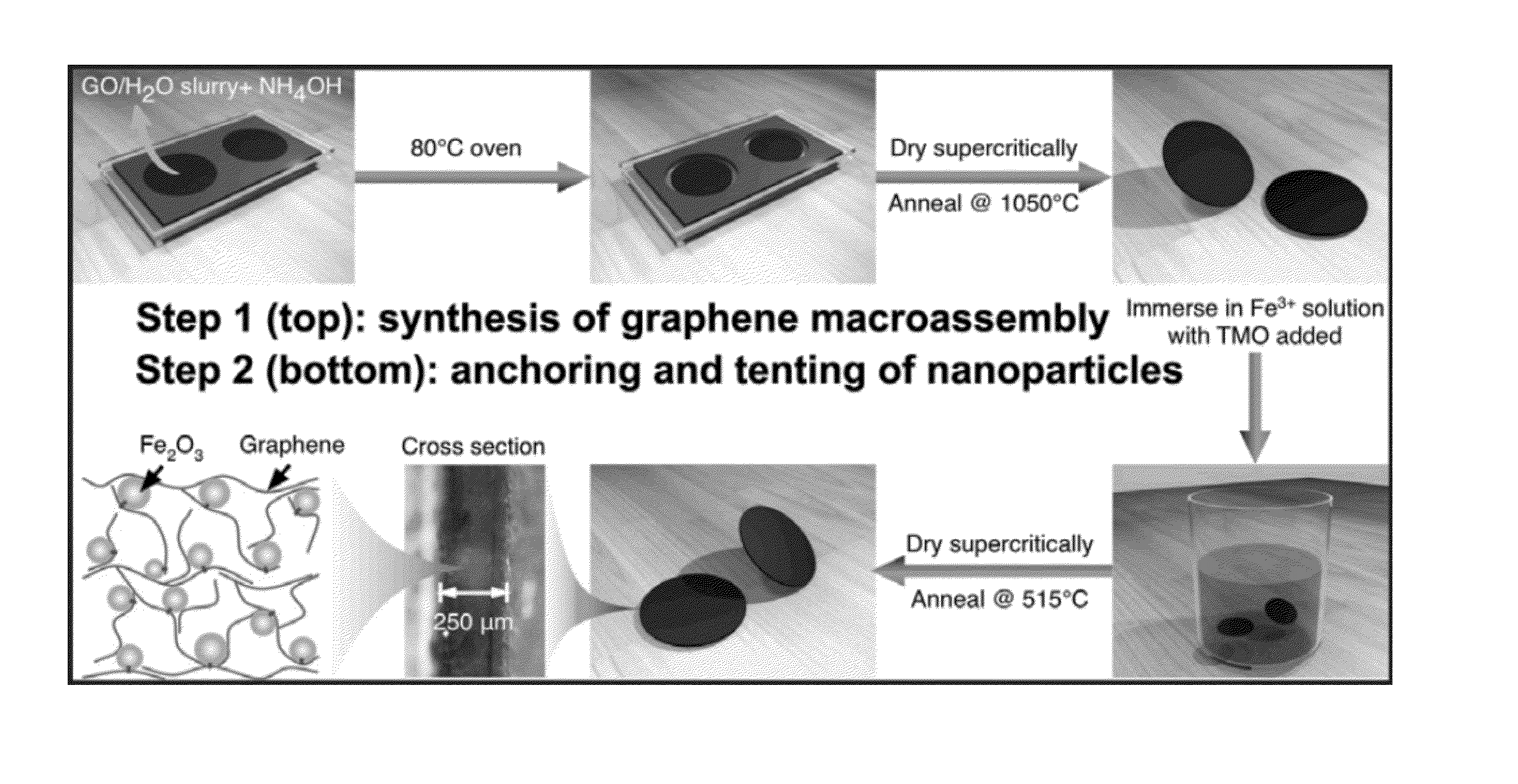Graphene-supported metal oxide monolith
- Summary
- Abstract
- Description
- Claims
- Application Information
AI Technical Summary
Benefits of technology
Problems solved by technology
Method used
Image
Examples
working examples
[0089]Additional embodiments are also provided in the following non-limiting working examples. For example, graphene-supported metal oxide monoliths were prepared and characterized.
example 1
[0090]Thick (˜250 μm), carbon-black- and binder-free, nanoporous graphene / Fe2O3 hybrids were synthesized through a chemical sol-gel method. In contrast to previous approaches (and in order to achieve thick and binder free electrodes), the synthetic strategy began with a novel 3-dimensional (3D) graphene macroassembly (GMA) scaffold, FIG. 1 (Step 1), using the method reported in Worsley et al., Chem. Commun. 2012, 48 (67), 8428-8430. The as-synthesized GMA has a thickness of ˜250 μm, a density of ˜70 mg / cm3, a very high surface area up to ˜1500 m2 / g, high electrical conductivity (˜2 S / cm), and nanometer-sized open porous distributions, a bulk part of which is smaller than 10 nm. Both the density and surface area of the GMA are higher than most 3D graphene assemblies reported in the literature (see Chen et al., Nature Mater. 2011, 10 (6), 424-428). The GMA is also mechanically robust, with a high compressive failure strain of 80-100%, making it sui...
PUM
 Login to View More
Login to View More Abstract
Description
Claims
Application Information
 Login to View More
Login to View More - R&D
- Intellectual Property
- Life Sciences
- Materials
- Tech Scout
- Unparalleled Data Quality
- Higher Quality Content
- 60% Fewer Hallucinations
Browse by: Latest US Patents, China's latest patents, Technical Efficacy Thesaurus, Application Domain, Technology Topic, Popular Technical Reports.
© 2025 PatSnap. All rights reserved.Legal|Privacy policy|Modern Slavery Act Transparency Statement|Sitemap|About US| Contact US: help@patsnap.com



